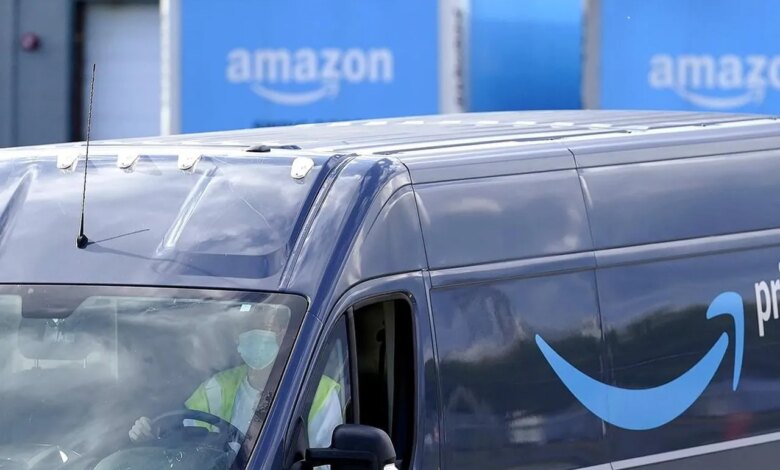Be wary of scams as Amazon Prime Day gets underway, experts warn

NEW YORK (AP) — Amazon Prime Day has arrived. And again, experts warn consumers about scams.
Scams targeting online shoppers — often by impersonating companies like Amazon and other major retailers — are nothing new. But phishing attempts are on the rise amid busy spending seen during major sales events — from Black Friday to Prime Day, of course, according to the Better Business Bureau.
“This is a huge moment in the retail calendar,” Josh Planos, vice president of communications and public relations at the Better Business Bureau, told The Associated Press. “And that’s why it presents a huge opportunity for a con artist, con artist, or even just an unethical company or organization to take advantage of the moment and separate people from their hard-earned money.”
Prime Day, a two-day discount event, starts on Tuesday and runs through Wednesday. In guidelines released last week, the Better Business Bureau reminded consumers to watch out for lookalike websites, too-good-to-be-true social media ads, unsolicited emails or phone calls, and more near Prime Day and other sales events this month outside of Amazon.
Scott Knapp, director of global buyer risk prevention at Amazon, identifies two scams the company has seen around Prime Day in recent years: Prime membership and order confirmation hoaxes.
For example, last year people reported getting cold calls or emails saying something was wrong with their Prime membership. They were then asked for payment information, such as a credit card, and sometimes for login credentials, Knapp explains — adding that Amazon “or a reputable company” wouldn’t ask for that information that way.
Urging consumers to confirm an order they didn’t place is also a common tactic this time of year, he adds. Scammers can pick something expensive like a smartphone to get attention and ask for payment details again or send a malicious link.
“We sell a lot of stuff and people know the (Amazon) name,” Knapp told the AP. “Bad actors try to take advantage of that.”
Of course, there are plenty of other scams out there – it’s hard to identify more details for this year’s Prime Day before it kicks off. Still, experts add that scams are often repeated year after year.
“Most of the time, the bones stay the same,” Planos said, pointing to repeated fake delivery scams, email phishing and more. “It’s always a trick to separate consumers from (their) personal and payment information.”
But online hoaxes are also constantly evolving to become more sophisticated, Planos and others warn. That means images can look more legit, text messages can sound more convincing, and fake websites can start to look a lot like your typical shopping destinations.
Artificial intelligence “is also starting to leak in,” Knapp said. “But they still follow the same approach. It’s just now that a machine might be filling out the email or SMS.
According to February data from the Federal Trade Commission, consumers reported losing approximately $8.8 billion to fraud by 2022, a 30% increase from 2021. Online shopping scams were the second most reported type of fraud , after a scam, according to the FTC.
Both the FTC and the Better Business Bureau provide consumers tips to avoid scams all year round. Guidance includes blocking unwanted messages, not providing financial information to cold callers, and checking links before they click — secure websites, for example, have “HTTPS” in the URL, Planos notes, never “HTTP.”
Scammers will often pressure you to act immediately, experts say. It’s important to pause and trust your gut. Experts are also urging consumers to report scams to regulators.
In addition to scams posing as a company or retailer, it’s also important to be wary of counterfeit products and fake reviews found on the sites of retailers you may trust. For example, just because you are shopping on Amazon does not mean you are buying from Amazon as the online shopping giant such as eBay, Walmart and others have huge third-party marketplaces.
The quality and appearance of counterfeit products has improved significantly in recent years, Planos notes, making activity difficult to monitor. A good rule of thumb is to look at the price tag – if the product sells for less than 75% of the market price year-round, “that’s a pretty big red flag,” he adds.
Sketchy sellers can appear on a variety of platforms, including sites like Amazon, “all the time,” Planos said, urging consumers to check out companies at the Better Business Bureau’s website. As with other scams, counterfeit products can increase around high spend periods like the holidays or, again, near-sale events like Prime Day.
Amid increasing pressure to crack down on counterfeit products, Amazon has reported that they want to get rid of them millions of fake products in recent years, and blocked billions of bad entries from getting to its site. In 2022 the company said more than 6 million counterfeit items were “identified, seized and appropriately disposed of”.
In a statement sent to The Associated Press on Monday, the Seattle-based e-commerce giant said it had “zero tolerance” for both counterfeit products and fake reviews, noting that the company will block more than 200 million suspected fake reviews by 2022.
Customers can also report fake reviews and other scams on Amazon’s website, said Handsome. For “rare” cases where a customer “purchases an item that Amazon detects is a counterfeit product,” the company added, “we proactively contact the customer, inform them that they have purchased a counterfeit product, and pay their purchase in full.”




